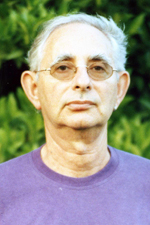By Dov Hartuv

KIBBUTZ NAHAL OZ, Israel –Knowing our past makes our future significant
I think most of us missed out on learning about our roots and family history when we never grasped the chance of speaking to our grandparents or great grandparents when we had the opportunity. It seems that we all share an inborn dislike of probing into our family’s history when we are young and only looking forward.
The only chance I had of learning directly about my family was through the one grandmother I knew and who died when I was still a teenager. I don’t ever remember asking her about her family or why she spoke with an American accent. Only in later years was I able to piece together titbits of information that gave me a small insight into a life that must have been amazing.
Today at the ripe old age of my late grandmother I eagerly gather any second hand data that will give me some understanding of the trials and tribulations of an ordinary, but for me extraordinary, family that had its roots somewhere in Eastern Europe in the 18th and 19th century.
Without being really aware of the reasons that is most probably why I studied to be an archivist and over the last thirty odd years I’ve been the archivist (on a part time basis) of Kibbutz Nahal Oz and its community. From the beginning I stipulated to myself that my task was to gather, order, save and be able to produce again , all information and authentic material related to the kibbutz. Unlike most archives, the kibbutz archive is divided into two sections – all the administrative records and material that has been preserved and on the other side everything that has been recorded about the individuals and the history of the kibbutz.
For many years using a cross-purpose filing system every document and photograph had to be arduously written down by hand on all the relevant cards in the filing system. With the advent of the computer and a suitable archivist programme, life has become far more simple and one record of a name or event can be found again according to the relevant question asked.
Nothing gives me deeper satisfaction then to be able to produce all the photographs and material relating to someone whose grandson wants to create a surprise presentation for his grandfather or to verify some question about the validity of a decision that was made twenty years ago.
Every community should have its archives – not just piles of papers gathering dust but computerised material that links the past to the present and the future.
I would be interested to know whether the San Diego Jewish community has preserved the records of its beginnings and continued to document the community and its inhabitants through to the present day.
We know very little about the ordinary people and their lives in Eastern Europe before the Holocaust. In places like Worms, births deaths and marriages were recorded from the Middle ages. Josephus gives us a glimpse into the life and times of the Jews after the destruction of the Second Temple. So we get a tantalizing view of Jewry throughout the ages.
No matter how insignificant it may seem, every document has its value in piecing together the patchwork pattern of a community.
*
Hartuv is a correspondent in the Sha’ar Hanegev municipality, which is a partnership region for the Jewish Federation of San Diego County. He may be contacted at dov.hartuv@sdjewishworld.com In answer to his question, the Jewish history of San Diego has been well documented in a variety of books and in the painstakingly assembled and cared-for archives maintained by the Jewish Historical Society of San Diego County in association with the special collections department of the library at San Diego State University.